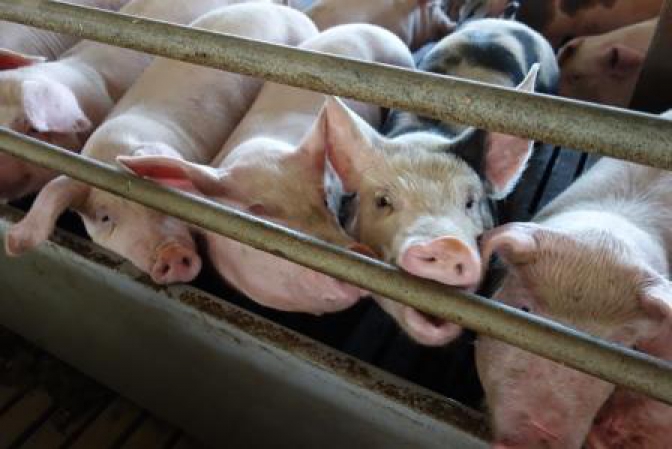Before slaughter, most pigs in the EU are stunned with high levels of carbon dioxidegas (CO 2 ), which is widely recognised as a painful stunning method. More humane alternatives are now emerging according to a new report presented on 4 April by the PigStun Project.
In 2023, the European Commission contracted the PigStun consortium, managed by the Institute of Agrifood Research and Technology (IARTP), to develop non-aversive stunning methods for pigs with the objective of encouraging EU pig slaughterhouses that use high concentrations of CO 2 to adopt more animal-friendly methods.
People like to trust in the term ‘humane slaughter’ believing that farmed animals are slaughtered with minimal suffering. But in the case of most pigs this is a delusion.
Humane slaughter is generally a two-stage process, where animals are first stunned – rendered unconscious – and then killed. Most of the around 220 million pigs reared annually in the EU are stunned by being lowered into a pit containing a high concentration of CO 2, which causes immense suffering. Before falling unconscious, pigs suffer from breathlessness and hyperventilation, and are often seen desperately struggling to escape.
EU and industry in denial
The industry has known about these welfare problems for nearly thirty years but has failed to develop a humane alternative. Back in 1996, researchers concluded that pigs show profound aversion to a high concentration of CO 2 and that this gas leads to ‘severe respiratory distress’.
In 2004, the European Food Safety Authority (EFSA) confirmed that at concentrations above 30%, CO 2 is known to be “aversive” and “can be painful”. EFSA stressed that the development of alternative humane gas mixtures was a high research priority.
Despite clear scientific evidence, the welfare of pigs has been sacrificed for profit. During the revision of the EU law on welfare at slaughter in 2009, the opportunity to ban this inhumane stunning method arose, but the European Council argued that a phase out of this method would not be ‘economically viable at present in the EU’, effectively allowing this practice to continue.
While the regulation encouraged further discussion on phasing out the use of CO 2 for pigs, for many years nothing was done by the industry, the European Commission or the EU Member States to address the massive suffering involved in pig slaughter.
Stunning alternatives available
In 2020, fresh pressure emerged when a new EFSA Scientific Opinion described exposure to CO 2 as a “serious welfare concern” as it inherently causes inevitable pain, fear and respiratory distress. Instead, EFSA recommends adopting other gas mixtures that are less aversive.
However, advocates of CO 2 stunning continue to argue that a key benefit of this method is that pigs can be kept in small groups while they are moved through the slaughterhouse to the stunning pit, allowing them to avoid the stress from being their companions which is common in herd animals.
At present the alternative to CO 2 stunning is electrical stunning. With this method, an electric current renders the pig immediately unconscious via tongs placed on the pig’s head.
The placing of tongs and the delivery of the electric current is usually automated and requires pigs to be moved out of their groups into single file. However, because pigs are herd animals and find being separated from their companions extremely stressful, getting them into single file frequently involves rough handling, with electric goads often used to force them to move.
Time for ban on carbon dioxide
In its report, the PigStun Project examines several alternatives. One of the most promising is the use of argon gas, which is shown to be much less aversive for pigs than CO 2 , though it is not problem-free.
Another approach looked at in the project is to develop much less stressful ways of moving pigs in slaughterhouses that use electrical stunning. The Dutch animal welfare organisation Eyes on Animals has worked with a large pig slaughterhouse to redesign the way pigs are moved to the automatic electrical stunners, resulting in a huge reduction in stress.
Now that we have the PigStun report, the Commission must move rapidly to reform its animal welfare rules and propose an urgent ban on the use of high levels of CO 2 to stun pigs. This should be replaced by argon and much improved design and layout of slaughterhouses using electrical stunning.
While neither method is without difficulties, both are vastly better than the use of high concentrations of CO 2 . We need to rapidly get to the point where ‘humane slaughter’ becomes the daily reality in pig slaughterhouses rather than being, as at present, a piece of ‘welfare washing’ that hides immense suffering.


